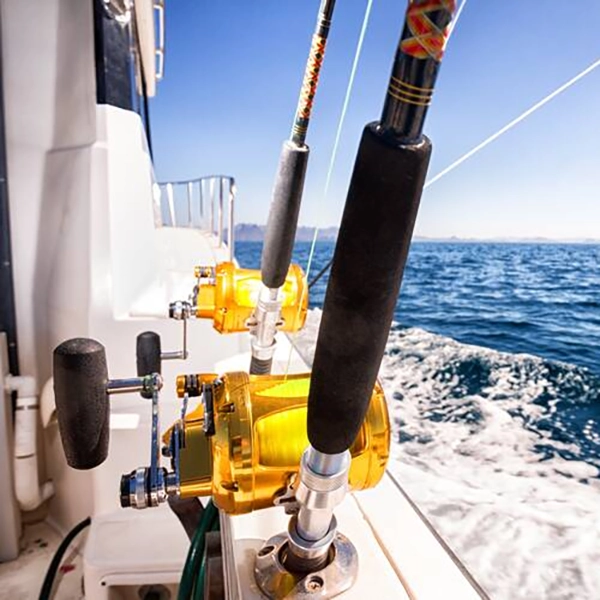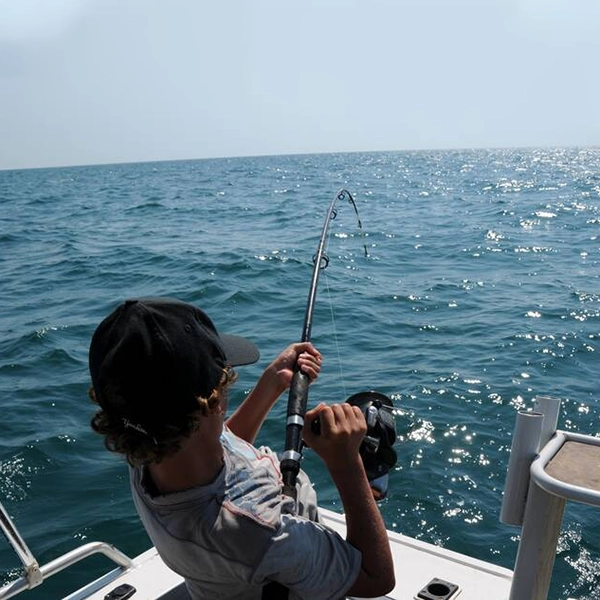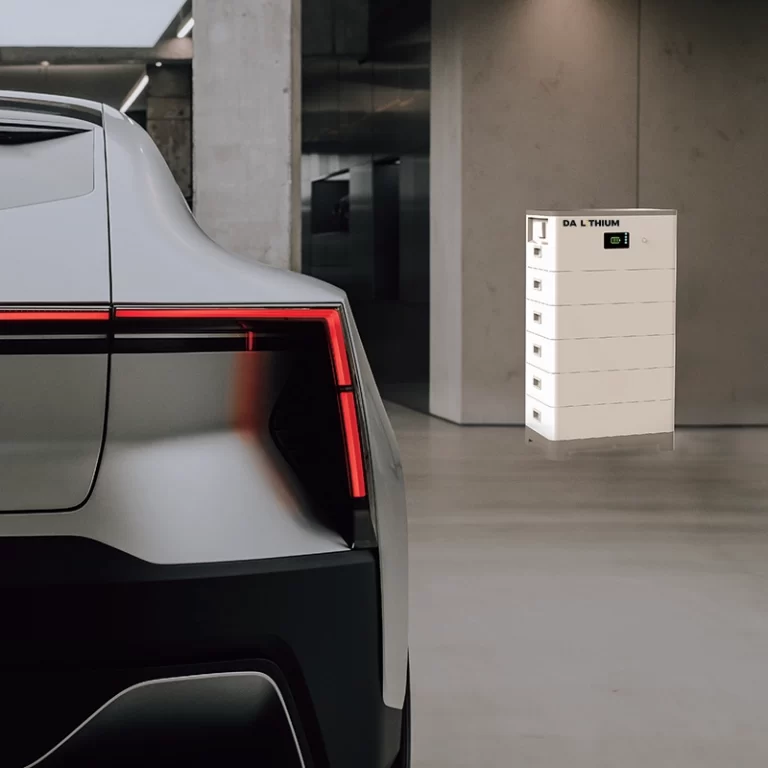As long as it looks like it’s doing its job, you probably don’t care much about your boat battery. In fact, many boat owners just use the original batteries that came along with their boat.
But what if your battery needs to be replaced? Or, what if you were buying your first boat? Do You Need Deep Cycle Marine Batteries? (yes!) Or would a starter battery do the trick? (Too!) Time to get to the boat batteries…and we’re here to help.
As technology advances, more and better batteries become available. But like a 10-page menu, more options make things more confusing. Might be more difficult to choose!
Marine batteries come in a variety of chemistry, sizes and uses. Before making a decision, it’s better to know what is a deep cycle marine battery, how does it works, and which is best.
First of all, we provide a short, less technical explanation of the most common terms on the boat battery:

Boat Battery Terms
Think of this basic term as “appetizer”. Familiarity with the battery vocabulary will help you to figure out the confusing specifications and jargon you may come across while shopping.
Amp Hour (AH)
This refers to the amount of energy your boat’s batteries can store. The larger the AH number, the larger the capacity.
Cycle
One cycle is a full discharge and a full charge. Deep cycle batteries usually have a cycle life or cycle rating. This rating indicates the number of cycles you can discharge and recharge the battery before it reaches 80% of its original capacity. At that point, most batteries will need to be replaced.
C rate (or Capacity Hour Rate)
It is actually a measurement of rate at which the battery be charged or discharged. You can also say it is the ratio between current draw, battery capacity and time. Most deep cycle marine batteries follow a standard 20 hour rate. The number “20” means discharge within 20 hours. For example, a battery with a capacity of 100AH and a rating of C20 can deliver 5 amps for 20 hours before being discharged.
Depth of Discharge (DOD)
This is the amount of your battery’s total capacity that you drain before recharging. For example, if your battery has reached 60% DOD, it means that you have 40% capacity left. A battery with a capacity of 100AH would have 60% DOD if you drained it to 40AH.
This is the total capacity of the battery that drain before recharging. For example, if your battery has reached 60% DOD, it means you have 40% capacity left only. If you drain a 100AH battery down to 40AH, it stands for 60% DOD.
Internal resistance
The term refers to the ability of a battery to resist energy as it is charged and discharged. The lower the internal resistance, the better. Batteries with higher internal resistance don’t charge as efficiently and can get hotter while charging because the energy lost is converted to heat.
State of Charge (SOC)
This is how much capacity your battery could be charged in. For example, a fully charged battery has a state of charge (SOC) of 100%.
What is a Deep Cycle Marine Battery?
Now for the main course: What is a deep cycle marine battery?This type of battery support you to power the trolling motor, radio, GPS, fish finder, and other gadgets on your boat (as well as RV parts, but that’s another topic). It is different from a starter battery or cranking battery, which we will discuss more below.
Deep cycle marine batteries can withstand multiple charges and discharges. That’s why (in most battery types) it has thick and heavy plates. It can survive rigorous charging and hundreds of cycles.
Like the tortoise in the old fable “The Tortoise and the Hare,” you might think of a deep cycle battery as a “slow and steady” power source. Their instantaneous power is limited. That’s why you can’t use them to start your motor. For this, you’ll need a starter/starter battery, which we discuss below.
Cranking/Starting vs. Deep Cycle Marine Battery

The starter/cranking battery is designed to a quick start to the main motor. These batteries have thinner plates and can deliver hudge power for making your motor get running.
But try using a hand crank battery for “turtle” jobs like your trolling motor and other electrical accessories, and you’ll soon make yourself back to the battery store. Your battery will not be able to withstand rigorous continuous discharge. It will overheat and possibly quit permanently.
Does dual-purpose batteries make the best of both worlds?
At this point you might be thinking, “Isn’t there a single battery that can matches both?” Yes, it’s called a dual-purpose battery.
But while dual-purpose batteries share some characteristics of both crank and deep-cycle batteries, they don’t quite fit into any of them. Most will not have the CCA of a starter motor like a true starter battery, or withstand the number of cycles like a deep cycle marine battery.
But unlike other batteries, our lithium batteries are designed to handle cranking and deep cycle purpose! The best of both worlds.
Types of Deep Cycle Marine Batteries

If you’re looking for deep cycle marine batteries. Which type suits you? It depends on several facts:
- How much are you willing to pay upfront?
- How long do you expect the battery to last before replacing?
- How much weight your boat can hold
- Where to install the battery
- Prefer to maintain battery once in a while or maintenance-free
Below, we’ll talk about the most common choices for deep cycle marine batteries on the market:
Lead Acid Deep Cycle Marine Batteries
A lead acid battery mainly formed up by lead plates and acid. The kind you’ll be using on your boat is called a Flooded Lead-Acid (FLA) battery. These batteries contain with a mixture of sulfuric acid and distilled water. You must keep on filling with distilled water from time to time as a ordinary maintain.
Advantages: Since they are easy to find and popular, and also cheapest upfront option. They will last about 4-6 years if you take good care of them ( keep in mind FLA batteries last about 300-400 cycles in total, the number of years will be changed by how frequently/much you use them )
Disadvantages: Lead acid deep cycle marine batteries quite heavy – each 12v battery will add about 80 lbs of extra weight to your boat. Lugging them up and down is a hassle, not to mention they require constant maintenance and gas costs increased.
Gel Deep Cycle Boat Batteries
Like lead-acid batteries, gel batteries also contain a liquid electrolyte. However, they contain silicate which gels these electrolytes together. The gel kills the risk of damage from vibration and rough seas. Gel batteries are an upgrade version over FLA batteries and bring more advanced technology for marine batteries.
Advantages: The main advantage of gel batteries is that they can tolerate long periods without being charged. They have a self-discharge rate of 1% per month. You can also install them in any position in your boat (except upside down).
Disadvantages: The main points of gel batteries is that they could stand for a long time without being charged. Their self-discharge rate is 1% per month only. Flexibility installation, mount them anywhere on the boat (except upside down)
AGM Deep Cycle Marine Batteries
AGM is short for Absorbed Glass Mat. These batteries withstand of thin fiberglass mats between the lead-acid plates. These plates are fully soaked with acid. They are also highly shock resistant because of tightly packed.
Advantages: AGM improved based on FLA batteries. They are charging faster and you don’t have to refill with water any more. The self-discharge rate is 3% per month only. Don’t worry about any splash acid, which means you can install them anywhere on the boat if you want.
Disadvantages: These batteries are prone to overcharging, which can destroy them. They cost more than similar capacity FLA batteries. Of all marine battery types, they also have the shortest cost life.
Lithium/LiFePO4 Deep Cycle Marine Batteries
If considering an all-around investment for a deep cycle marine battery, LiFePO4 comes in the first priority. Instead of lead plates and acid, it’s made with lithium iron phosphate. As the latest technology in marine battery, LiFePO4 offers many improvements against others, especially FLA.
Advantages: They are the lightest battery types so far. By switching to lithium, you can reduce the weight of your boat by up to 70%. They also charge faster and maintenance&leak free.
Disadvantages: The only cons to LiFePO4 marine batteries is the higher upfront cost. But considering its longevity (5-10 times longer than other batteries), you’re saving money in a long term of investment.
What Deep Cycle Marine Battery Should I Choose?
If you have enough money for the tastiest food on the menu, why not? These days, lithium boat batteries are becoming hottest popular specially for fishing enthusiasts. They also performed many advantages for the avid boater and even the occasional fisherman. Their higher upfront cost will be reduced when you end up with fewer replacement boat batteries.
So, unless you feel the price is over target, there is no reason not to choose the LiFeP04 deep cycle marine battery over other types of batteries. If you are not sure what kind of marine battery setup you need?


